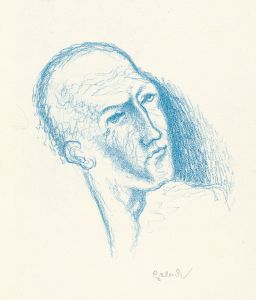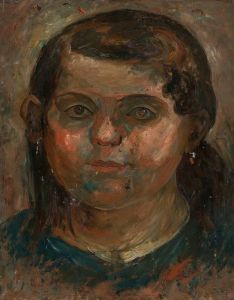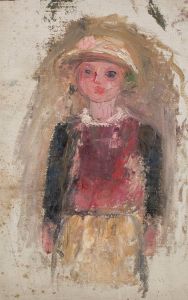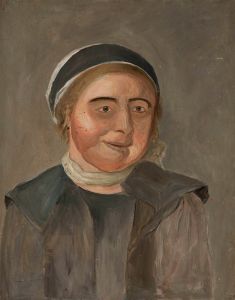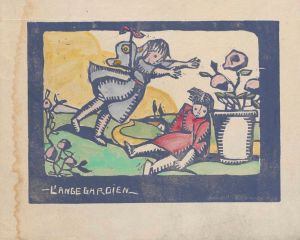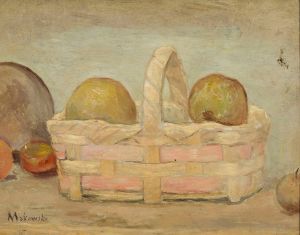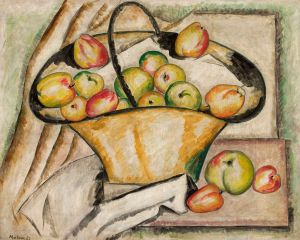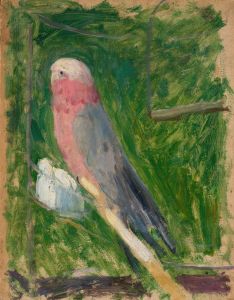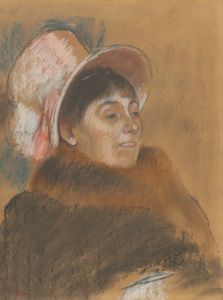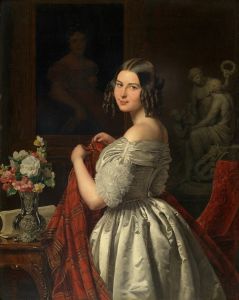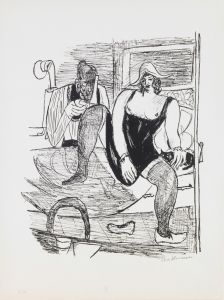
Head
A hand-painted replica of Tadeusz Makowski’s masterpiece Head, meticulously crafted by professional artists to capture the true essence of the original. Each piece is created with museum-quality canvas and rare mineral pigments, carefully painted by experienced artists with delicate brushstrokes and rich, layered colors to perfectly recreate the texture of the original artwork. Unlike machine-printed reproductions, this hand-painted version brings the painting to life, infused with the artist’s emotions and skill in every stroke. Whether for personal collection or home decoration, it instantly elevates the artistic atmosphere of any space.
Tadeusz Makowski was a Polish painter known for his unique style that combined elements of folk art, symbolism, and modernism. His work often depicted scenes of everyday life, children, and landscapes, characterized by a distinctive use of color and form. One of his notable works is "Head," which exemplifies his approach to portraiture and his ability to convey emotion and character through simplified forms.
"Head" by Tadeusz Makowski is a painting that reflects the artist's interest in capturing the essence of his subjects through a minimalist yet expressive style. Makowski often drew inspiration from the innocence and simplicity of childhood, and this is evident in the way he approached portraiture. The painting features a head, likely of a child, rendered with a focus on basic shapes and muted colors, which is typical of Makowski's work. His use of geometric forms and a limited color palette creates a sense of harmony and balance, allowing the viewer to focus on the emotional expression of the subject.
Makowski's style was influenced by his exposure to various art movements during his time in Paris, where he moved in 1908. He was part of the École de Paris, a group of artists who were known for their diverse approaches to modern art. While in Paris, Makowski was influenced by the works of Paul Cézanne and the Cubists, which is evident in his use of geometric shapes and a structured composition in "Head." However, unlike the Cubists, Makowski maintained a softer, more lyrical approach, often infusing his work with a sense of nostalgia and warmth.
The painting "Head" is a testament to Makowski's ability to blend different artistic influences while maintaining his unique voice. His work often evokes a sense of timelessness, capturing the universal qualities of human experience. In "Head," the simplicity of the composition does not detract from the depth of emotion conveyed through the subject's expression. Instead, it invites the viewer to engage with the painting on a more intimate level, encouraging reflection on the themes of innocence and introspection.
Throughout his career, Makowski remained committed to exploring the human condition through his art. His works are celebrated for their ability to convey complex emotions through simple forms, and "Head" is no exception. The painting is a fine example of Makowski's mastery of form and color, as well as his ability to create a connection between the viewer and the subject.
Tadeusz Makowski's contributions to the art world continue to be recognized and appreciated for their unique blend of modernist techniques and traditional themes. His paintings, including "Head," remain an important part of the Polish art heritage, reflecting the cultural and artistic shifts of the early 20th century. Makowski's work is housed in various collections and museums, where it continues to inspire and captivate audiences with its timeless appeal and emotional depth.






